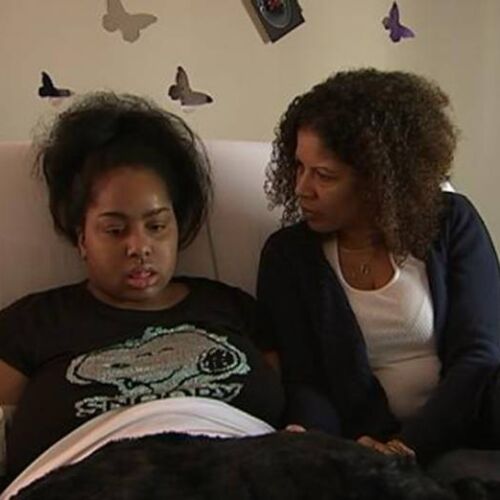Relax, rest, forget, and protect: The Endocannabinoid System’s intricacies were one of the many topics of discussion by some of the world’s top cannabinoid experts.
By Sarah Russo | May 12, 2012
The 7th National Clinical Conference on Cannabis Therapeutics was put on by Patients Out of Time and held on April 26-28th 2012 in Tucson, AZ. This year was the largest in the organization’s history, with over 300 participants.
Many doctors, nurses, and other practitioners attended the conference and received Continuing Medical Education (CME) credit for participating. The increased engagement of medical practitioners and beyond represents a turning point in the prevalence of interest in cannabis science.
The Patients Out Of Time conference is held bi-annually. This year focused on the Endocannabinoid System (ECS). Speakers at the conference covered the role of the ECS on pain centers in the body, regulating mood, increasing the immune system, among other topics. An overall agenda can be found here.
Some highlights of the conference included talks by leading researchers in the field such as Vincenzo Di Marzo, John McPartland, Andrea Hohmann, Matthew Hill, Melanie Kelly, Greg Gerdeman, Christina Sanchez, Jahan Marcu, among others. Di Marzo gave an overview of the Endocannabinoid System, explaining that the ECS is a system in our bodies that modulates stress recovery and adaptation.
Actions that best describe the role of the ECS actions are “relax, rest, forget, and protect.” Endocannabinoids are also neuromodulators, which adjust activity and effects of other systems in our bodies.
John McPartland discussed the “Care and Feeding of the Endocannabinoid System” explaining that the ECS is older than the cannabis plant itself. According to McPartland, the cannabinoid receptors evolved 600 million years ago in vertebrate organisms (long before humans!). Andrea Hohmann gave her description of the ECS effect on neuropathic pain.
Cannabinoids have direct affects on pain pathways in the body, while also acting as an anti-inflammatory. That day Martin Lee gave information on the benefit of CBD (cannabidiol) and other lesser-known cannabinoids. CBD and other cannabinoids received frequent mention from speakers.
Melanie Kelley gave an overview of the effect of cannabinoids on the eye, which coincided with presentations from long time cannabis patient Gary Storck and Elvy Musikka, both who have been able to manage their glaucoma for decades with the use of cannabis. Kelley explained that cannabinoids such as THC lower intraocular pressure in the eye.
The benefit of using cannabinoids over other prescription drugs for glaucoma and other disorders is that cannabinoids also have neuroprotective properties and anti-inflammatory properties. The neuroprective properties of cannabis protect the eye tissue from the damage associated with these diseases. Other drugs only act to lower pressure in the eye, and lack the neuroprotective properties of cannabis.
Matt Hill spoke on the ECS and how it regulates aspects of our mood. There are densely packed cannabinoid receptors in the limbic system (the main center in our brains that affect our mood and behavior). Greg Gerdeman followed with information on a recent study he was involved in showing that distance running improves endocannabinoid signaling.
Dr. Gerdeman stated in his conclusion that cannabinoids do not fit well in the category of “drugs of abuse” but that the ECS is “clearly an important player in neural circuitry of reward and/or positive effect.” This helps to explain why we get the reward of a runner’s high when we run long distances.
Donald Abrams, who discussed cannabinoids and cancer care, started off the second day of the conference. His presentation was followed by Christina Sanchez from Spain who shared the recent findings of her study on cannabinoids and cancer. Her research demonstrated that cannabinoids CBD and THC kill cancer cells and can stop the blood supply to tumor growth.
Jahan Marcu spoke later in the day about ALS (amyotrophic lateral sclerosis, Lou Gehrig’s disease), which is a condition in which the motor neurons, connected from the spinal chord to muscles, progressively die. There is no standard treatment for this disease, but cannabis has helped ALS patients with chronic pain, spasms, and nausea from other medications.
Dr. Marcu’s presentation was shared with Cathy Jordan, who is a long time ALS patient and uses cannabis illegally because she lives in a non-medical state. She explained that she has lived many years longer than most with the disorder, and she can thank cannabis for allowing her to cope with the aspects of the disease.
The second day included a block of speakers, including POT co-founder Al Byrne, on the benefits of cannabis for Post Traumatic Stress Disorder (PTSD).
The conference concluded with Andrew Weil, Julie Holland, Clint Werner, and Melanie Dreher on a panel discussing the Endocannabinoid System and its implication on health care. Dr. Weil described that he feels that most doctors won’t accept smoked cannabis as medicine, and believes that there needs to be standardized pharmaceutical prescription approaches to get most American practitioners on board.
Both days ended with a Questions and Answers session, which allowed conference goers the opportunity to ask questions of the speakers that day. The event also had an exhibits section and fundraising dinner with live music.


